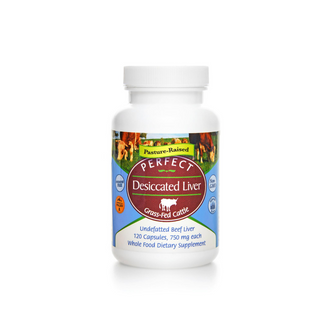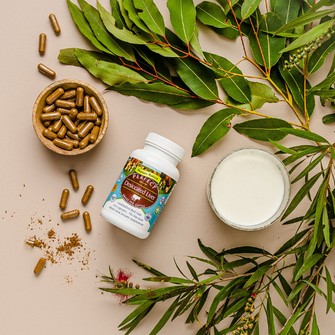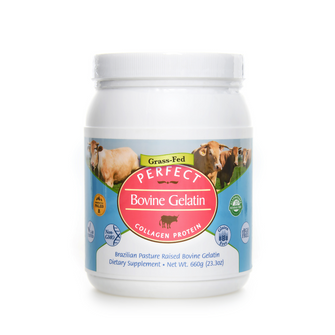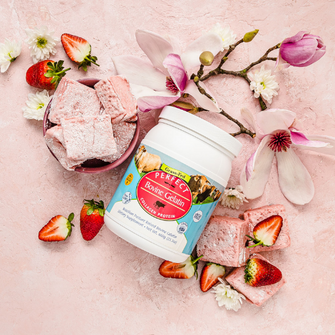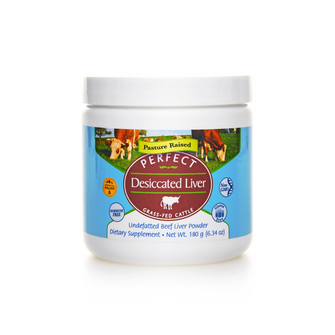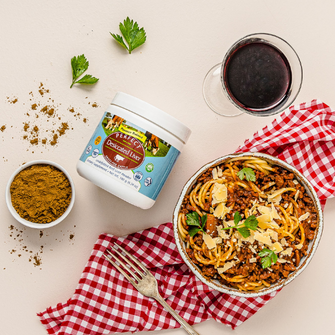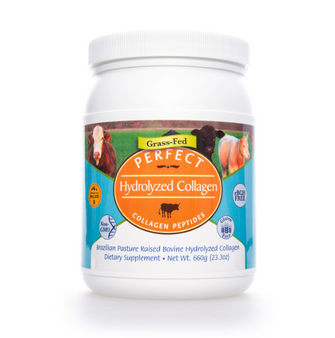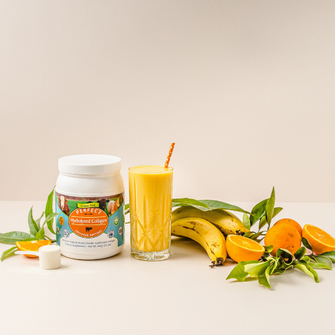Share
Amino Acids
Ok, so you may be aware that there’s a lot of talk about amino acids these days and for good reason! That’s because they are essential for supporting good health and in synthesising proteins.
There are many amino acids but for the purpose of today’s blog I won’t mention them all (though we do talk about many).
Alanine
This amino acid is involved in the biosynthesis of proteins and helps the body to convert glucose (great to help stabilise blood sugar levels for hypoglycemics). Not only that but it’s also used by the liver to help eliminate surplus toxins in the liver.
When taken with glycine and glutamic acid, alanine is known to support prostate health. It’s also been shown (through various research) that taking an oral dose of L-alanine (alanine) can be more efficient for insulin-dependent diabetics rather than reaching for a snack before bedtime.
Alanine is necessary for the metabolism of tryptophan (the amino acid needed in the production of mood-regulating serotonin). It (alanine) is also important for your body’s immune system because it produces antibodies.
Food sources for alanine
- Meat, poultry, eggs and dairy products
- Avocados, beans, bran, brewer’s yeast, brown rice, collagen powder, corn, legumes, mushrooms (raw), nuts, seeds, watercress, whole grains, and spirulina.
Arginine
L-arginine (arginine) cannot be made by the body alone, we need to get it from the foods we eat and if we aren’t getting enough from those foods then it might be a good idea to take it in a supplement form.
The main benefit of L-arginine is it’s ability to help the body’s circulation of blood and the widening of blood vessels (therefore it may be of benefit to people suffering from Raynaud’s disease/phenomenon or peripheral circulation issues/disorders.)
Because the possible benefits are so many it’s hard to know where to begin?
- Inflammation-fighter
- May help to lower the risk of arteriosclerosis and heart attack
- Blood vessel repairer
- Lower blood pressure
- Can help athletic performance
- Increases immune function
- Reduce muscle pain
- Improve kidney function
- Improve mental clarity and focus
- Help to fight Dementia
- Beneficial in correcting impotence, erectile dysfunction and male fertility
- Useful for preventing the common cold
- Can help fight effects of ageing
Food Sources for arginine
The most common food sources for arginine are beef, lamb, poultry, fish, eggs, hydrolyzed collagen and dairy (similar to many other amino acids).
Aspartic Acid
This amino acid is used by our body to generate adenosine triphosphate (ATP) which is the main cellular energy source.
Our bodies can produce aspartic acid so this one is not considered an essential amino. Just make sure that you’re getting enough though protein in your diet so that you don’t become deficient. If you need a protein boost try this.
For the synthesis of arginine, lysine, methionine, isoleucine and asparagine to occur, L-aspartic acid (aspartic acid) must be present.
Aspartic acid may be liver-protecting because it has hepa-protective properties (‘hepa’ meaning liver).
Food sources for aspartic acid
Foods such as asparagus, fish, soy and spirulina are good sources of aspartic acid and so is Hydrolyzed collagen.
Cystine
This is another amino acid that can be synthesised by our liver so it’s not considered an essential one. However, in saying that, supplementation should be considered to cover your needs.
L-cystine contributes to overall well being because it helps to fulfil many important bodily functions. Chronic conditions such as cataracts and arthritis can be helped by the correct supplementation.
If you have a lot of stress (emotional/mental or emotional) this can actually use up more cystine therefore depleting your body of this important amino.
Extreme diets such as reduction diets can have a negative impact on both vitamins and aminos so proceed with caution if considering one of these diets.
Another potential benefit of L-cystine, is that it helps support synthesis of glutathione. Glutathione can be powerful for our immune health as it acts to strengthen it. It does this through inhibiting inflammation.
If you’re interested in ageing gracefully, you will be interested and excited to know that it’s also been shown to naturally slow down ageing (can I get a hell yeah?!?).
What else?
- Improving hair & skin
- Increase male fertility
- Reduce inflammation
- Preventing illness & disease
- Combat osteoporosis
What food sources for cystine
Meats such as chicken and pork contain high amounts of L-cystine, and then raw salmon and eggs would follow closely behind. Make sure to source organic meat and wild salmon if possible.
Soy is the plant source but again, make sure it’s organic and non-GMO. The best sources of soy are organic tempeh and cooked soy beans. The problem with much soy on the market (unless certified organic) is that it is genetically modified (GM) and this has been believed to alter our DNA.
Hydrolyzed collagen powder is another source of cysteine (you get 4mg per serve).
Glutamic Acid
Glutamic acid is a non-essential amino acid that can be produced in the body with the aid of other amino acids. Glutamic acid plays an important role in the metabolism of sugars and fats and aids in potassium transport into the spinal fluid and across blood brain barrier and also acts as fuel for the brain.
This amino acid is beneficial for healthy brain function and it is mostly metabolised in the brain. If the person cannot produce the proper amount of glutamic acid, this can cause some serious brain disorders such as schizophrenia. Glutamic acid is also beneficial to mentally challenged individuals, those with muscular dystrophy and Parkinson’s Disease.
Food sources for Glutamic Acid
Foods such as soybeans, chicken, eggs, seeds, cheese, fish and hydrolyzed collagen powder.
Glycine
This amino acid is useful for many different muscle, cognitive and metabolic functions. It aids in the breaking down and transport of nutrients such as glycogen and fat that are used as energy by the cells in our body. It supports a strong immune, nervous and digestive system. Glycine is found mostly in the skin, connective tissues of the joints and muscle tissue. This amino acid is one of the nutrients that gives bone broth it’s amazing healing component, considered as superfood.
Benefits of Glycine
- Builds lean muscle mass
- Important in the human growth hormone production
- Improve memory and focus
- Prevent strokes and seizures
- Reduce joint pains and protect collagen in joints
- Improve flexibility
- Normalises blood and lowering risk for type 2 diabetes
- Better rest and sleep
- Reduce risk for certain types of cancer
- Helps produce bile salts and digestive enzymes
- Produce red blood cells
- Fights the effects of stress and anxiety
- Increase energy
Top Food Sources for Glycine
Glycine can be found in the following food sources:
- Fish
- Meat
- Dairy products
- Soybeans
- Spinach
- Kale
- Cauliflower
- Cabbage
- Pumpkin
- Banana
- Kiwi Fruit
- Cucumber
- Beans
- Hydolyzed collagen
Histidine
Histidine is an amino acid that helps maintain healthy tissues in the body especially the myelin sheaths that covers the nerve cells and ensure transmission of messages from the brain to rest of the body parts. Histidine can treat mental disorders and certain types of sexual dysfunction.
Benefits and Uses of Histidine
- Building block of protein in the body
- Produces histamines
- Eases symptoms of rheumatoid arthritis
- Anti fungal
- Combats anaemia
Food Sources
- Lean Beef & Lamb
- Cheese
- Lean Pork
- Chicken and Turkey
- Soy foods
- Fish
- Seed and Nuts
- Eggs and Dairy
- Beans and Lentils
- Whole grains
- Hydrolyzed collagen powder
Hydroxyproline
This amino acid is essential to the body for bone, tendons, cartilage and skin strength. It is necessary in the strengthening and building of the body’s major structural protein which is collagen. When collagen is not well supported this can lead to gum and skin bleeding and symptoms of scurvy. A deficiency of hydroxyproline occurs only when there is lack of vitamin C in the body.
Food Sources
Hydroxyproline is a nonessential amino acid and is manufactured from other amino acids in the liver, this means that the body can produce it. This amino acid does not have to be obtained directly through the diet in order to be healthy, though you can get it from hydrolyzed collagen powder also.
Isoleucine
This amino acid has the ability to increase endurance, repair muscle tissue and encourage clotting on the injury site. This is essential for athletes and bodybuilders because it primarily boost energy and help the body recover easily after physical exertion.
Isoleucine cannot be manufactured in the body and can only be acquired through food sources.
Benefits
- Keeps energy levels stable by regulating blood sugar
- Promote muscle recovery after a strenuous physical activity
- Converts to energy within the muscle tissue.
Food Sources
High protein foods such as nuts, seeds, meat, eggs, fish, lentils, peas, soy protein and hydrolyzed collagen powder.
Leucine
Leucine is important for muscular health, liver and fat tissue. It is the only amino acid that can stimulate muscle growth. It’s functions include muscle growth stimulation and having the ability to modulate insulin sensitivity and catabolic effect on fat.
Health Benefits of Leucine
- Necessary for children’s optimal growth and nitrogen maintenance in adults.
- Leucine functions on the skeletal muscle through the two anabolic effects which are: protein synthesis stimulation and protein lysis inhibition.
- Maintain muscle proteins
Leucine is found in the following food source
High leucine foods include cheese, soybeans, beef, chicken, pork, nuts, seeds, fish, seafood, beans and again, hydrolyzed collagen powder.
Lysine
Lysine is an essential amino acid used as building block by the body for many different functions essential for health maintenance and growth. This can’t be manufactured by the body unlike other types of amino acids.
There are many food sources where Lysine is available but others prefer to take it as a dietary supplement.
Benefits of Lysine in the body
- Cold sores and herpes infection treatment and prevention
- Increase intestinal absorption of calcium
- Prevent osteoporosis
- Increase muscle mass
- Lower glucose
- Prevent anxiety attack
Food Sources
Found in beans, cheese, yogurt, meat, milk, brewer’s yeast, wheat germ, and other animal proteins such as hydrolyzed collagen powder.
Methionine
Methionine is responsible for the many functions of the body and plays an important role in metabolism. Its antioxidant content is proven to help fight free radicals in the body and it functions as an anti-ager too. This amino acid is also responsible for collagen production that can help enhance skin, hair and nails.
Benefits
Methionine is used for the following
- Treatment for liver disorders
- Improve wound healing
- Increase urine acidity
- Alcoholism prevention
- Treatment for depression
- Asthma
- Allergies
- Copper poisoning
- Schizophrenia
- Drug withdrawal
- Anti-ageing effects
- Radiation side effects
Food Sources of Methionine
Animal Foods: Beef, pork, poultry, fish, crabs, mollusks, cheese, egg (white) and hydrolyzed collagen powder.
Plant Foods: whole grains, cornmeal, nuts, seeds
Phenylalanine
Phenylalanine is an essential amino acid (a building block for proteins in the body), meaning the body needs it for health but cannot make it. You have to get it from food. Phenylalanine is found in 3 forms.
- L-phenylalanine, the natural form found in proteins
- D-phenylalanine (a mirror image of L-phenylalanine that is made in a laboratory)
- DL-phenylalanine, a combination of the 2 forms
It’s uses include the following:
- Treatment for chronic pain, vitiligo, Parkinson’s disease and depression
Dietary Sources
This amino acid can be found in foods such as:
- Beef
- Poultry
- Pork
- Fish
- Milk
- Yoghurt
- Eggs
- Cheese
- Soy products
- Nuts and seeds
- Hydrolyzed collagen powder
Proline
This amino acid is needed in order to produce collagen and cartilage. It promotes muscle and joint flexibility and prevent skin wrinkling and sagging. Proline aids in the breakdown of proteins in the body essential for skin health.
Benefits
Used as treatment for specific conditions such as herpes, arthritis, back pain and is helpful in promoting cardiovascular health in combination with Vitamin C.
Food Sources
- Meat
- Dairy products
- Eggs
- Hydrolyzed collagen powder (excellent source of proline at 1477mg/serve)
Serine
Serine is synthesised in the body and is one of the non essential amino acids that make up protein.
Health Benefits of Serine
- Plays an important role in protein, fatty acid and genes
- Promote muscle build up
- Protects the brain and nervous system for proper functioning
- Boost immune health system
Food Sources
- Soybeans
- Egg
- Peanuts
- Lentils
- Nuts, walnuts
- Flax seeds
- Almond
- Chickpeas
- Asparagus
- Soy milk
- Hydrolyzed collagen powder
Threonine
This is one of the 20 amino acids that make up proteins and is considered an essential amino acid not synthesised by humans. This amino acid must be obtained from food sources.
Health Benefits of Threonine
It supports heart health, liver, central nervous system and boost immune health. It also aids in the synthesis of glycine and serine (these two help in the collagen and elastin production and muscle tissue). This amino acid helps to build strong bones, strong tooth enamel and speeds up wound healing.
Food Sources
- Meat and meat products
- Fish
*Disclaimer: the information in this article is intended purely as information and not health advice. It is not intended to treat, diagnose, prevent or cure and one should always seek expert advice from their trusted health practitioner.


